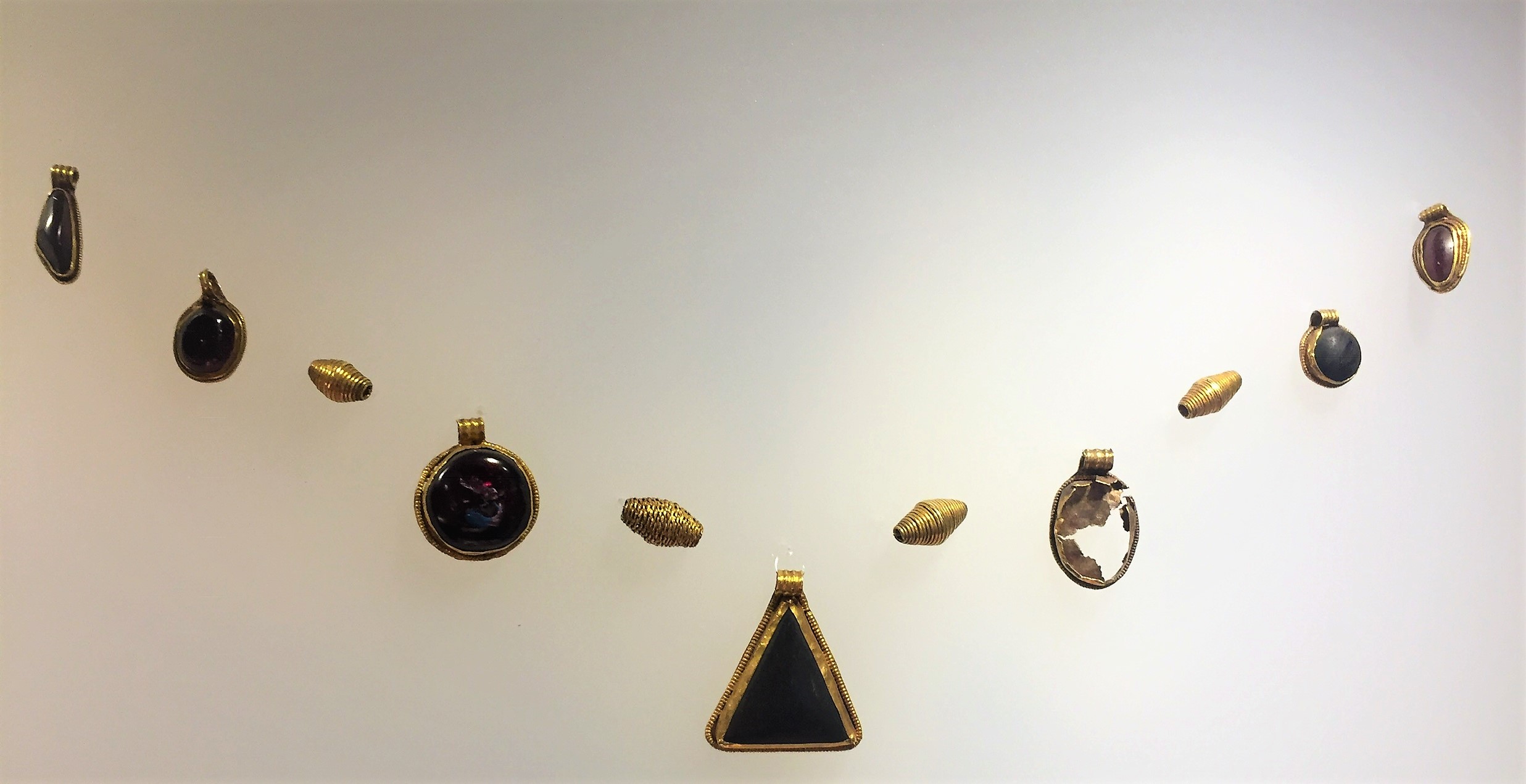The Roundway Abbess
In 1840, a barrow on Roundway Down was excavated to reveal a Saxon woman buried with various items, including a coin and a beautiful gold and garnet necklace. She had been laid to rest on a wooden bed, wearing a Christian cross on a small enameled disc, mounted on a chain between two gold pins. The extraordinary gold jewellery showed she was a Christian, and probably an abbess from a local noble family.
This necklace was fashioned with four gold wire beads and four gold pendants, set with polished red garnet stones. The garnet is believed to have come from as far as India or Sri Lanka. The name garnet is thought to have come from the 14th century word ‘gernet’, which means dark red, from the Latin granatus. It has been argued that this is a reference to ‘pomum granatum’ the Latin name for pomegranates, whose red seeds are said to look like garnet stones. Garnet gemstones are distinct in their use in England from the 7th century onwards, as their colour is often associated with the growth of Christianity in England, which is why the Roundway Abbess may have been buried with garnet jewellery. In other cultures throughout the ages, garnets have always been an important gemstone. Egyptian, Greek and Roman people all used and wore garnet jewellery as a form of protection, as well as regarding them as the ‘warrior’s stone’.
The Roundway Abbess is believed to be one of the last people buried with objects in their grave given to them by their family members. By 670 AD the Church had begun to discourage people from burying items with their deceased; burials dated soon after were found without personal possessions, showing how quickly Christianity had spread its roots and gathered devout followers throughout England.
By Sasha Minnis,
Duke of Edinburugh Award student



